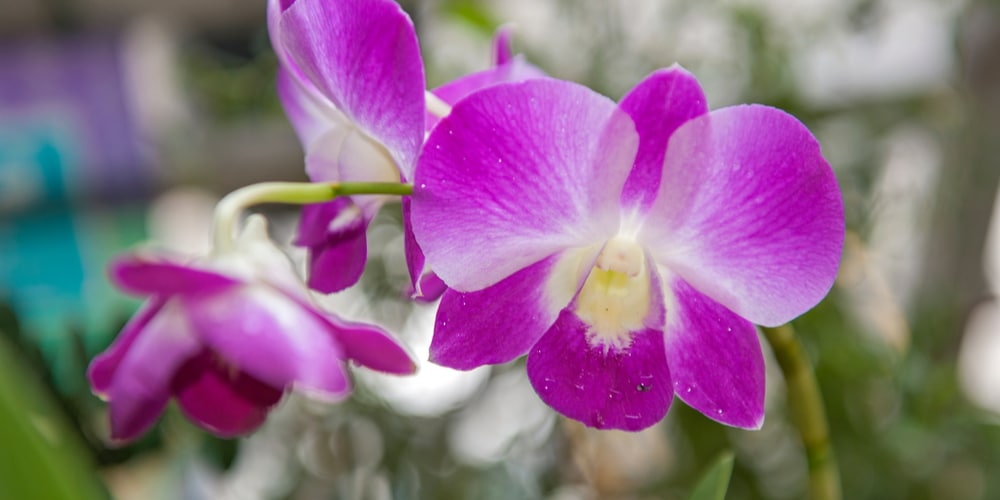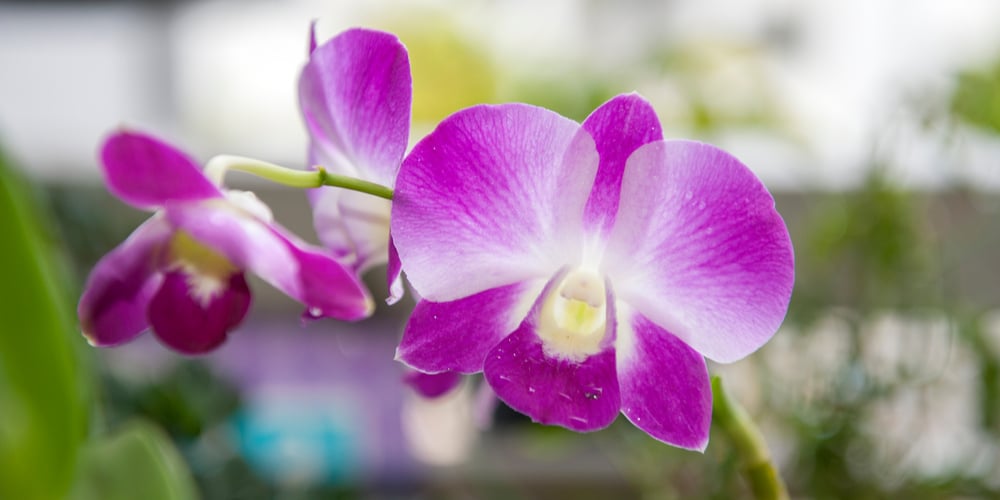The Butterfly Orchid is a beautiful and unique flowering plant that has long been a favorite of gardeners and nature lovers alike for it is a truly stunning flower. With its long, cascading petals and exotic shape, it’s no wonder that this orchid is such a popular choice for indoor gardens.
These flowers are native to tropical Asia and are available in a wide range of colors including white, pink, purple, and red. Surprisingly, their blooms can last for several months.
Orchids are one of the most popular types of houseplants, and it’s easy to see why. With their exotic blooms and elegant foliage, they add a touch of luxury to any home. But while they may look delicate, orchids are actually quite easy to care for. With a little bit of knowledge, you can keep your them looking its best for years to come.
| Botanical Name | Phalaenopsis |
| Common Name | Butterfly Orchid |
| Plant Type | Perennial |
| Flower Color | White, pink, lavender, yellow |
| Size When Mature | 8 – 36 Inches |
| Bloom Time | Spring and summer |
| Sun Requirements | Partial shade, indirect sunlight |
| USDA Hardiness Zones | 10 – 12 |
| Soil PH Range | 5.5 – 6.5 |
| Soil Type | Slightly acidic, moist |
| Water Needs | Low |
| Native Area | Southeast Asia, New Guinea, and Northern Australia |
What You Need to Know About Butterfly Orchid
Orchids are a diverse group of plants, with over 25,000 species found all over the world. While they are often associated with delicate beauty, some orchids can be quite poisonous. The Butterfly Orchid, however, is one of the few that is considered non-toxic to humans and pets.
The vast majority of Phalaenopsis Orchids are not fragrant. However, there are some wonderful exceptions. Phalaenopsis bellina and Phalaenopis violacea are two sweet-smelling species. They produce a fragrance that is like a mix of vanilla and cinnamon.
The plant gets its name from the shape of its flowers, which resemble small butterflies. The flowers are usually white or pink, and they are born on tall stems.
The foliage of the plant is just as distinctive as the flowers, with long, narrow leaves that are often variegated with shades of green, yellow, and white. In some cases, the leaves may also be covered with tiny red or purple spots.
This plant is surprisingly easy to grow and requires little care once it is already established. When in bloom, it is truly a sight to behold and this generally lasts from two to three months. However, after the initial bloom, the plant would enter a resting period.
How to Care for Butterfly Orchid
Here’s everything you need to know about growing and caring for a thriving Butterfly Orchid:
Light
This orchid needs bright, indirect light in order to bloom. If the plant does not receive enough light, the flowers will begin to fade and the leaves will become yellow. On the other hand, too much direct sunlight can scorch the leaves and cause them to turn brown.
To ensure that it gets the right amount of light, place it near an east- or west-facing window. If you live in a particularly sunny climate, you may need to filter the light with a sheer curtain or blinds.
Water and Soil Needs
The key to keeping it healthy is to provide it with the right type of water and soil.
The best soil for a Butterfly Orchid is a mixture of perlite, bark, and sphagnum moss. This type of soil drains well and prevents the roots from sitting in water, which can lead to root rot. The soil should also have a slightly acidic pH level between 5.5 and 6.5.
When it comes to watering, the best method is to thoroughly water the plant. After that, allow the potting mix to dry out completely before watering again. This typically means watering once every 7-10 days.
Overwatering is one of the most common mistakes made so be sure not to do so. If the leaves begin to turn yellow or brown, this is usually a sign that it is getting too much water.
Temperature Requirements
When it comes to temperature, it prefers warmth and humidity. In its natural habitat, it would be exposed to daily temperature fluctuations between 68-86 degrees Fahrenheit.
However, it can also tolerate slightly cooler conditions, as long as there is sufficient humidity. As it is native to tropical Asia, this orchid can survive in USDA climate zones 10 to 12.
Fertilizer
A Butterfly Orchid is a beautiful and popular choice for indoor growers, thanks to its striking flowers and relatively easy care requirements.
However, like all plants, it does need a regular supply of nutrients to stay healthy and bloom its best. The best fertilizer to use on a Butterfly Orchid is a complete and balanced orchid or all-purpose fertilizer for flowers that contains equal amounts of nitrogen, phosphorus, and potassium plus micro-nutrients. This will help ensure that your plant gets all the nutrients it needs to grow and bloom.
Apply the fertilizer every two weeks during the growing season, and be sure to dilute it by half to avoid burning the roots. With proper care and feeding, your Butterfly Orchid will reward you with many years of beautiful blooms.
Common Diseases
This orchid is relatively resistant to pests and diseases, but it may be susceptible to mealybugs, spider mites, and scale. These pests are usually found on the underside of the leaves and can cause the plant to become weak and unhealthy. If you notice any of these pests on your orchid, be sure to remove them immediately.
The best way to prevent problems with pests and diseases is to keep the plant healthy and stress-free. This means providing it with the right amount of light, water, and fertilizer as well as keeping an eye out for signs of trouble.
Butterfly Orchid Propagation
These orchids can be easily propagated by seed or by division. To propagate by seed, you will need to purchase a sterile growing medium and plant the seeds in individual pots. Keep the pots moist and warm, and in time, the seeds should germinate.
The easiest method is division, as it only requires a sharp knife and a healthy parent plant. First, the parent plant should be carefully removed from its pot. Next, the root ball should be divided into two or three sections, making sure that each section has at least one bud. The sections can then be replanted in new pots filled with moist potting mix.


